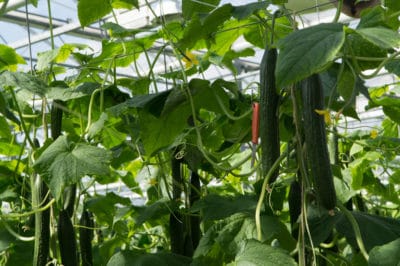Expert gardener’s tip: Don’t confuse vining cucumbers with bush varieties bred specifically for container or small-space gardening. They typically need less than 3 square feet of space.
How Vining Cucumbers Climb
Cucumbers can climb thanks to some curiously structured leaves. Called tendrils, they’re filled with cells that respond to being touched. A cuke’s stringy tendrils try to cling to a solid surface by coiling around it. If the surface is vertical and they succeed, the cucumber vine will climb it.
Expert gardener’s tips:
- How sensitive are cuke tendrils? Charles Darwin found that a woolen thread weighing just 1/100000th of an ounce triggered the coiling response in wild cucumber tendrils.
- Leave the tendrils on your cukes even if you decide to let them sprawl. Cutting them off could allow harmful soil bacteria to infect the injured tissue.
Benefits of Letting Cukes Climb
{link u=growing-cucumbers-vertically]Growing your cukes vertically[/link] on a trellis, fence or other support means they can:
- Get more sunlight than sprawling ones, they make more food to put into flower and fruit production.
- Enjoy improved air circulation, so they’re less susceptible to airborne diseases such as powdery mildew.
- Produce fruit that’s straighter due to gravity, cleaner because it’s not in contact with the soil and easier to spot at harvest time — so it doesn’t become bitter from being left on the vine.
- Take up much less room than sprawling ones so you can grow more of them!
Expert gardener’s tip: Always position your trellis or other support in the cuke bed before planting your vines. Doing it after planting may harm their roots.
Training Your Cukes to Climb
Plant your cuke seeds or nursery starts at the bases of their supports to ensure sure they make contact. When the tendriled runners are long enough, wind them gently around and through the support’s openings. If necessary, secure them with loosely with strips of pantyhose or other soft, stretchy fabric. Remove the material once they’re climbing on their own.
